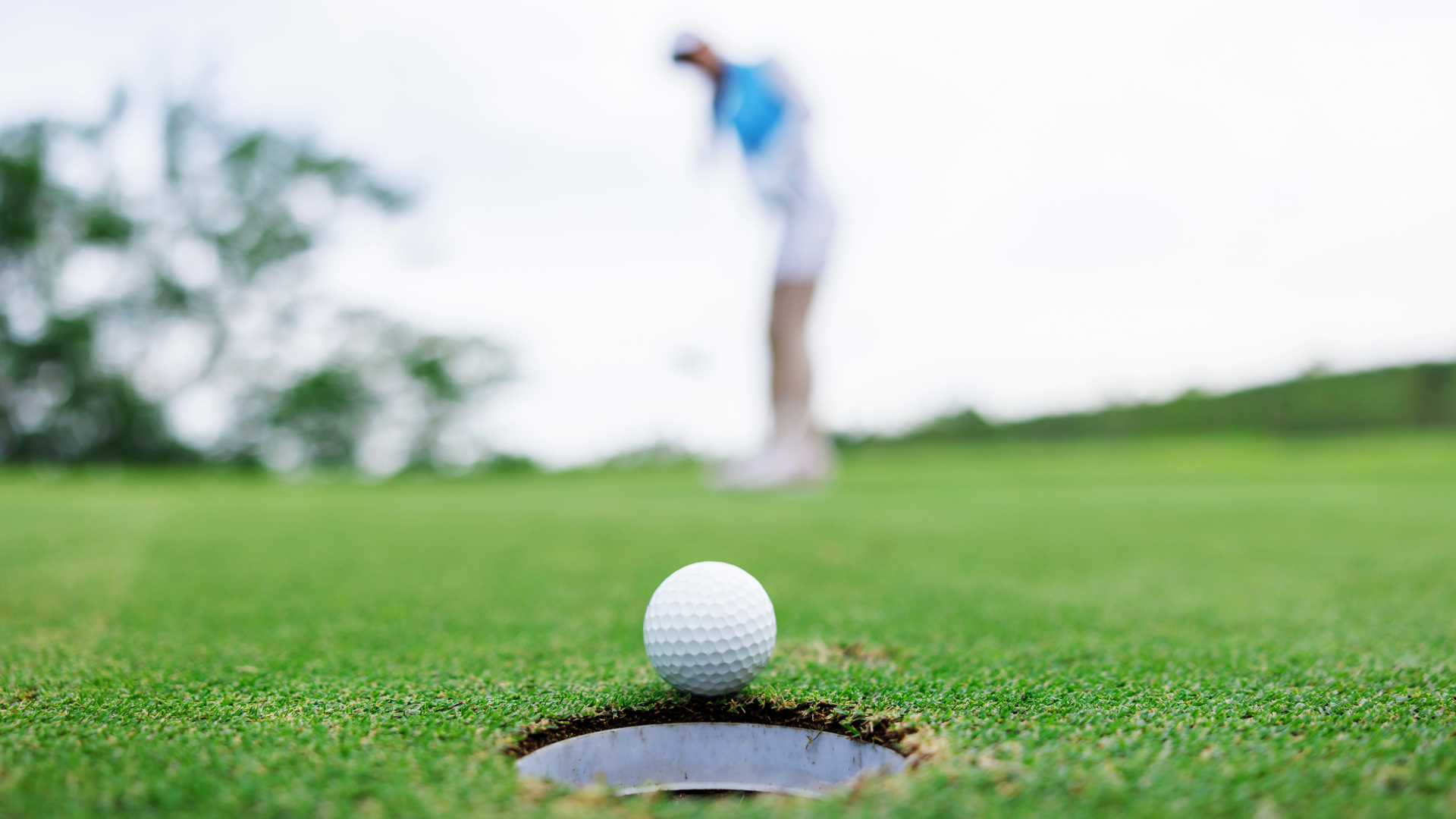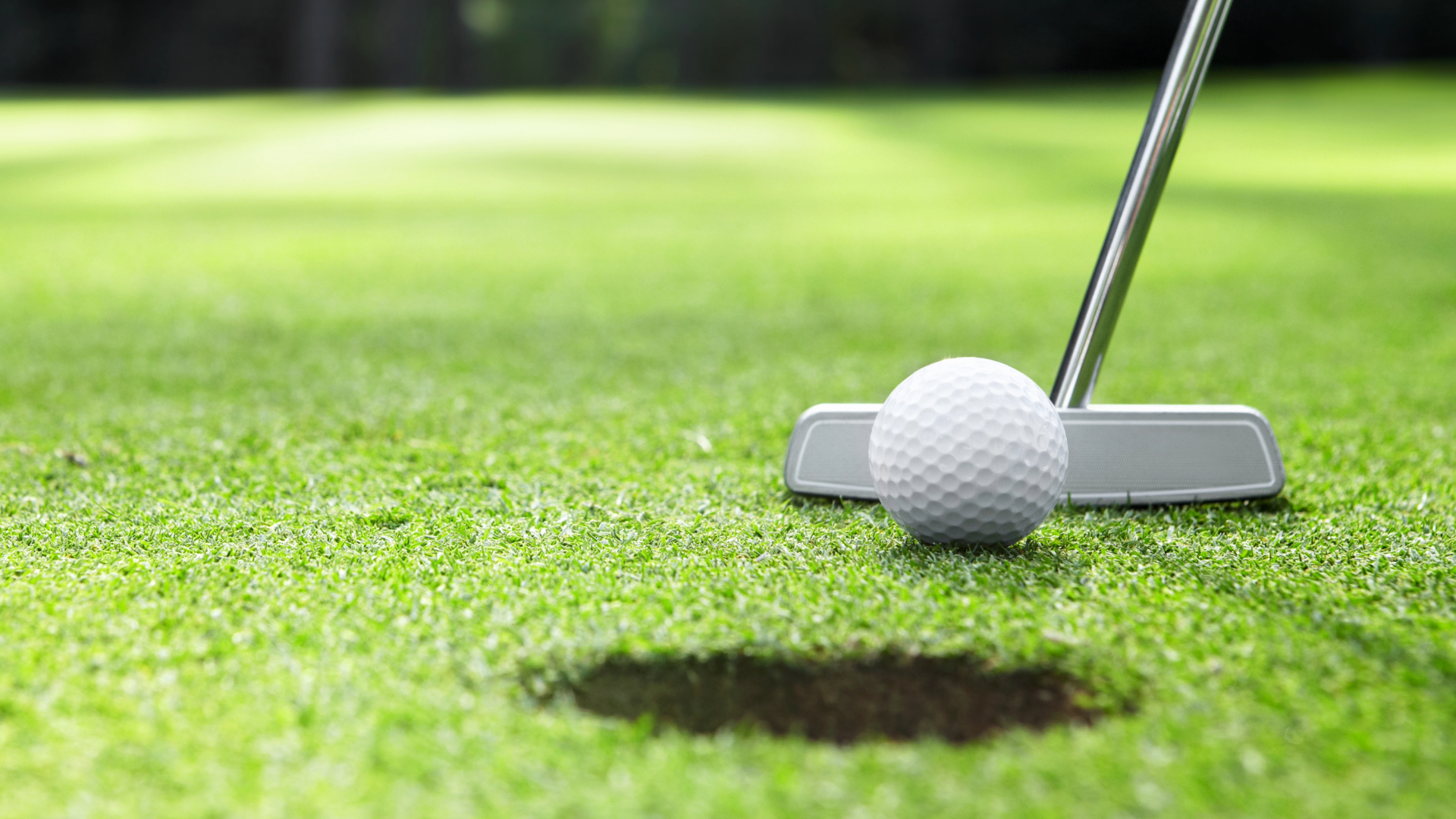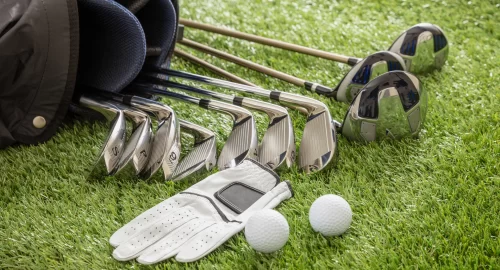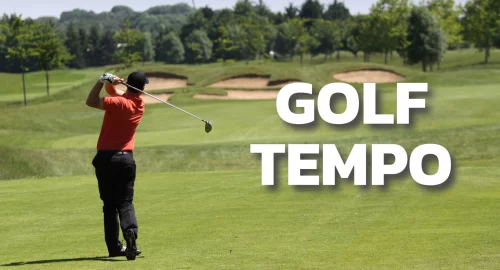
Putting is a crucial part of golf – whether you’re a seasoned professional or weekend warrior. A good day of putting can make you feel unstoppable, while a bad putting day can make you question your love of the game.
But how do you putt more consistently? Is it more practice? A new putter? Or a mix of both?
Today we’ll help you find the right type of putter, address common problems, and go over the best practice routines to accumulate more experience. And hopefully, turn a weakness into a strength so you can lower your handicap fast.
“Putting is like wisdom – partly a natural gift and partly the accumulation of experience.” – Arnold Palmer
Types of Putters
To putt your best, you need the right club for your height and stroke. Let’s review the three common types of putters to determine which is right for you.
Blade Putters

The first type of putter is known as a blade putter, which is very traditional. These putters are the smallest of those we’ll cover here, and mostly used by skilled players. If you’ve ever watched Tiger win a major championship, you saw him using his trusty blade putter.
Blade putters have what is known as toe hang; more weight is on the toe of the club to close the putter at impact. These putters work best with an inside-to-outside stroke, also known as an arc stroke, compared to a straight back, straight-through stroke.
They have a very simple design but don’t offer a ton of forgiveness, which is why they’re not great for beginners and higher-handicap golfers. If you hit it on the toe or heel and miss the sweet spot, you’ll likely end up well short of the hole.
Blade putters are also harder to line up properly than other types of putters, which can negatively impact putting. However, if you want a simple, minimalistic design for an in-to-out stroke, these are great putters.
Mallet Putters
The second type of putter is known as a mallet putter. These feature a half-moon shape and are significantly bigger than a blade putter. This style became popular in the 1980s with pros and amateurs alike, as they’re much more forgiving than the blade putter.
If you mishit with a mallet putter, they still end up a lot closer to the hole, hopefully allowing for fewer putts per round. This is great if your current stroke isn’t as precise, and want more confidence on the greens.
Not to mention, the larger design is also helpful in getting the ball aligned properly. There is more space on the clubhead which gives manufacturers more room to build in alignment aids.
These putters also work better with a straight back, straight-through putting motion.
Modern Mallet Putters
In the early 2000s, a modern mallet or high MOI (moment of inertia) putters became popular, and are commonly viewed as the more forgiving type. These putters are bigger than mallets and have very unconventional shapes, like the Odyssey 2-ball or the TaylorMade Spider.
These are very popular in the modern game of golf with a variety of players. It is common for these putters to have even better alignment aids and adjustable weights, which allow you to tweak the putter so it’s a perfect fit for your unique stroke.
They’re not for everyone, however, so do your own research and see if these may be right for you!
How to Find the Right Putter
Now that you have a better understanding of each type of putter, there are a few other things to consider getting the right club for you.
- Putter Length: Most putters – regardless of style – are between 33–35 inches. Some are as short as 32 inches and others might be as long as 36 inches, depending on gender, height and a variety of factors. Finding the right putter length is key to getting into a good posture, so your eyes are over the ball properly. The right length can also help reduce pain in your lower back and make you feel more comfortable over the golf ball.
- Armlock or Broomstick: There are still some variations with putter lengths, however. Arm lock putters have recently become more popular, and are between 37–42 inches. Broomstick putters are closer to 46 inches (even longer than a driver). These putters help remove extra wrist motion that can ruin a putting stroke, and also help players get out of a slump if a traditional putter isn’t working.
- Grip: Another important part of a putter is the grip, as there are tons of different sizes and styles. There are standard grips, midsize grips, and jumbo aka fat grips. The bigger the grip, the more you’ll remove wrist motion, which you don’t want much of when putting. It’s suggested to start with the smallest grip option and gradually increase size over time, as it’s difficult to go from a larger grip to a smaller grip.
- Adjustable weights: The final thing to consider with putters is buying one with adjustable weights. Like a lot of drivers, you can now move the weights around to match your stroke. This will help if you tend to miss putts left from a closed face or miss putts right of the hole from an open face.
Best Practice Putting Tips
Now that you know how to find the right putter for your game, let’s take a look at how to practice and become a more confident putter. Don’t forget to check out our 7 best putting tips here.
Putting Practice on the Golf Course
The most common way to work on your short game is at the practice putting green. You can work on all types of various length putts, work on your green reading technique, and develop a consistent putting routine.
When practicing your putting, it’s best to work on short putts (inside six feet) for a majority of practice. This is a crucial distance that will occur a lot on the course to save pars and bogeys.
Another important distance to work on is 40-foot lag putts. The goal from this distance is to avoid three putting and get the ball inside a three-foot circle.
Putting practice is also a great time to lock in how to read greens and create your full pre-shot routine. Some golf courses allow you to chip/pitch on the green, so you can create your own scramble challenges. Adding an element of competitive practice is a good way to simulate what it’s like on the golf course and is a must for some players.
At Home Putting Practice
If you can’t get to the green for a short practice, another easy way to improve your putting is at-home practice. It’s common for many golfers to have an indoor putting mat or outdoor putting green installed in the backyard. Even if you don’t have the budget or space for an outdoor putting green, a mat to use indoors can do wonders for your game.
Most mats are between 7–12 feet, so you can work on the most important length putts. Even if the weather is bad or you have a busy schedule, you can work on your game without leaving home.
You can also use this time to create/practice your routine and work with different training aids like putting mirrors. If you’re serious about your game, you need an indoor putting mat.
For more putting tips, check out this video on our YouTube channel.
Pre-Round Warm Up
Finally, don’t forget to have a pre-round putting routine before you go out on the golf course. This is one of the most important things you can do to prepare yourself for the round and hopefully play your best golf.
Unfortunately, most golfers spend more time on the driving range than the putting green before the round, despite the fact that roughly 30% of all shots in a round are with your putter in hand.
Before the round, make sure to spend 10–15 minutes determining the speed of the greens you’re on. It’s a good idea to work on putts of 30–40 feet before the round, as this is the most common distance you’ll have on the golf course.
You also want to spend plenty of time on short putts (3 to 6 feet) to see the ball go in the hole with your own eyes. This will boost your confidence on short putts that can make or break your round.
Lastly, don’t forget to go through your putting routine a few times before heading to the first tee. This will make it feel like you’re on the course and prepare your mind for the upcoming round.
Closing Thoughts
Putting is a crucial component of your golf game, and using the right equipment will make a big difference. Having the right type of clubhead and shaft length will help you putt (and make less strokes) with a lot more consistency.
Paired with consistent putting practice and a good routine, you can become unstoppable on the greens. If you need help with your putting, make sure to check out Hot Stick Putting by the world’s greatest putting professor, Kevin Weeks. He’ll help you with the simple 3-step method to have more one putts, cure the yips, and average less than 30 putts per round.

